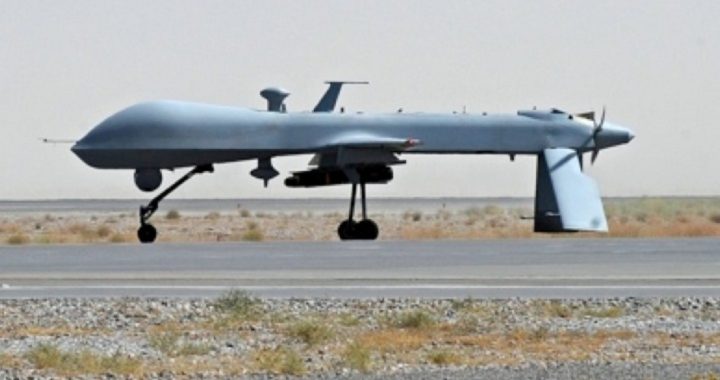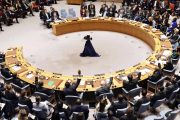
At a conference of top Pakistani and American officials in Aspen, Colorado, Sherry Rehman, Pakistan’s ambassador to the United States, criticized the Central Intelligence Agency’s drone warfare in Pakistan, describing it as having reached the point of “diminishing returns” and contributing to the growing anti-American sentiment in the country.
“This adds to the pool of recruits we’re fighting against,” Rehman said at the Aspen Security Forum held July 25-28.
With Pakistan’s spy chief, Lt. General Zaheerul Islam is scheduled to meet with CIA Director David Petraeus at CIA headquarters in Langley, Virginia, next week, Rehman also added that “we will seek an end to drone strikes and there will be no compromise on that.”
Ambassador Rehman’s remarks are understandable and are backed up by data contained in a report issued by the Bureau of Investigative Journalism (BIJ). According to that document, the United States has carried out at least 337 drone strikes in Pakistan, mainly centered in the tribal areas in the northern part of the province of Waziristan.
According to the organization’s website, the CIA has carried out four drone attacks in Pakistan in July, resulting in between 38 and 53 deaths, depending on the source of the fatality reports.
That number is up from the 22-46 killed in Pakistan by drone in June and it is “the highest in any month so far this year” according to the BIJ.
Not surprisingly, the American representative at the Aspen conference refused to comment on the drone war. Douglas Lute, “War Czar” in the Bush and Obama administrations, did, however, remind his counterpart that “sovereignty has privileges but also comes with responsibilities.”
Lute’s statement seems to be another demonstration of the White House’s commitment to advance the principles of the tenets of the UN’s “Responsibility to Protect” (R2P) doctrine.
As The New American reported in April, President Obama made a strong statement of support for R2P by appointing Samantha Power to head the new Atrocities Prevention Board.
Samantha Power rose to prominence in government circles as part of her campaign to promote R2P.
In a nutshell, Responsibility to Protect (also known as Responsibility to Act) is a doctrine advanced by the United Nations predicated on the proposition that sovereignty is a privilege, not a right, and that if any regime in any nation violates the prevailing precepts of acceptable governance, then the international community is morally obligated to revoke that nation’s sovereignty and assume command and control of the offending country.
The three pillars of the United Nations-backed Responsibility to Protect are:
• A state has a responsibility to protect its population from mass atrocities;
• The international community has a responsibility to assist the state if it is unable to protect its population on its own; and
• If the state fails to protect its citizens from mass atrocities and peaceful measures have failed, the international community has the responsibility to intervene through coercive measures such as economic sanctions. Military intervention is considered the last resort.
By echoing the chief premise of R2P, Lute confirmed President Obama’s commitment to defer to the UN and to the removal of the ever-present obstacle of American sovereignty from the internationalists’ efforts to bring all the world under their control.
There is no doubt that the Obama administration’s dedication to death by remote control is an affront to the sovereignty of Pakistan, as well as the other nations whose skies are buzzing with drones. While such a policy is unsupported by the Constitution specifically or by principles of liberty generally, the number of people being killed without being given an opportunity to answer the charges made against them is inimical to the concept of due process, as well. America is making enemies overseas by making herself an enemy to the Constitution.
Sadly, the tally of those killed by American missiles launched from unmanned aerial vehicles under the control of the CIA is growing.
In a report filed by the Pakistan-based Conflict Monitoring Center, additional details of the CIA’s drone war are revealed. The report offers evidence of the many people who were killed by American drones with no more than a suspicion of being linked to militant groups.
According to an analysis of the report by Global Research, in 2010:
The CIA carried out an unprecedented 132 drone attacks in tribal areas, claiming the lives of 938 people, it said. The Conflict Monitoring Center points out that none of the media organizations throughout last year reported on body counts from independent sources. Many analysts believe the geo-strategic game plan of the US has turned out to be counterproductive. The year 2010 was one of the deadliest years for civilians living in the tribal regions, as the number of drone strikes exceeded the combined number of such attacks carried out from 2004 to 2009. The report states that 2,052 people lost their lives in drone strikes during the 5-year period between 2004 and 2009. The rising civilian causalities have left behind many tragic stories in the tribal areas.
Pakistan is not the CIA’s only target for drone attacks, however. As reported by BIJ, Yemen and Somalia have seen increases in drone activity in 2012, as well.
For example, in July 2012, between 10 and 23 people have been killed in Yemen as the result of drone strikes in that nation.
In one such attack carried out on July 23, the BIJ explains:
A night time precision airstrike killed at least five alleged militants in a number of reported “air strikes” in southern Abyan province’s al-Mahfad. The area is said to be the last geographic stronghold of AQAP and Ansar al-Sharia, and AP reported Yemeni media as saying that “the militants were consolidating their positions in al-Mahfad, quoting witnesses who said they saw military hardware headed to the area in in trucks.”
Although the operation was attributed to the Yemen Air Force, it is unlikely that they possess such technology, thus implicating the United States in the strike.
Regarding Somalia, as we reported on July 24, there have been 64 unauthorized drone deployments, fighter jet missions or attack helicopter flights recorded in that country since June 2011. At least 10 of the documented flights involved drones.
While the U.S. military keeps mum about its use of drones around the world, it is known that drones are deployed and launched from American military bases in Djibouti, the Seychelles, and Ethiopia. In fact, in a statement released in June, the Obama administration admitted that it “is engaged in a robust range of operations to target Al-Qaeda and associated forces, including in Somalia.”
In 2011, the military acknowledged that as part of that operation a drone strike was launched against two suspected leaders of al-Shabaab, an alleged al-Qaeda affiliate based in Somalia. The use of these drones and the firing of missiles at militants seemingly violates a 1992 UN Security Council embargo still in effect, as drones carrying Hellfire missiles are inarguably deployed for uses that are “exclusively military,” in direct contravention of the terms of the 1992 directive.
Finally, on July 29, in the latest reported drone strike in Pakistan, up to seven “Uzbek militants” were killed. In contrast to that version of the story, however, media accounts of the event out of Pakistan claim that “All those killed in this latest drone strike were locals and not foreigners or Uzbeks as reported by a section of the press.”



